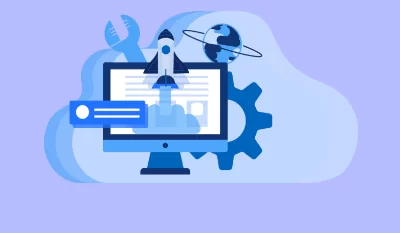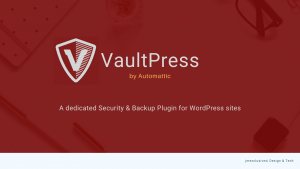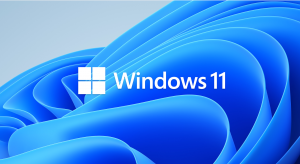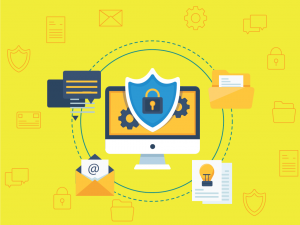Of course, the history of Django as the high-level Python framework for the web has come a long way. For your information, Django was initially developed between 2003 and 2005. Specifically, it was brought to life by a team responsible for creating and maintaining newspaper websites. After creating several websites/apps, they factored in and reused many standard codes and design patterns.
Eventually, this standard code evolved into a generic web development framework open-sourced as the “Django” project in July 2005. Given time, Django has continued to grow and improve, from its first milestone release (1.0) in September 2008 to version 4.0 in 2022. Notwithstanding, each release has added new functionality and bug fixes, including support for new types of databases.
As well as customizable template engines and caching. All this perfectly aligns with its “generic” view functions and classes — to help reduce the amount of code developers write for several operational tasks. Something that most programming languages fail to accomplish. In other words, Django is now a thriving, high-level Python web framework and collaborative open-source project.
It helps empower many thousands of users and contributors. While it still has some features that reflect its origin, Django has evolved into a versatile framework capable of developing any website. Before we elaborate on what Django offers, you can check out these release notes on the Django website to see what has changed in recent versions and how much work is going into improving it.
Understand What The Django High-Level Python Framework Offers Webmasters
Django is a high-level Python Framework that enables the rapid development of secure and maintainable websites. It’s been built by experienced developers to handle the hassle of web/app development — so you can focus on writing your code without reinventing the wheel. It is free and open source, with a thriving and active community, excellent documentation, and many essential options.
It has limitless free and paid support options. There isn’t any readily available and definitive measurement of the popularity of the Django server-side frameworks. However, you can estimate popularity by counting the number of GitHub projects and StackOverflow questions for each platform. A better question is whether it is “popular enough” to avoid the problems of unpopular media platforms.
Sure, Django is pretty stable. Companies like Disqus, Instagram, Pinterest, and Mozilla have used it for many years. Websites built on Django have weathered traffic spikes of over 50 thousand hits per second. Compared to the previous development times, the hardware technology is now cheap. At all costs, Django is designed to take advantage of as much hardware as you can throw at it.
In the fall of 2003, the World Online Developers (Adrian Holovaty & Simon Willison) ditched PHP and dived into Python to develop its websites. As they built intensive, richly interactive websites/apps, they began to extract a generic development framework that let them build websites/applications more quickly. They tweaked this framework constantly, adding improvements over two years.
Why Webmasters Should Utilize The Django High-Level Python Framework
One thing is sure: Django handles your website UX/UI design and development process hassle-free, so you can focus on writing your application without reinventing the wheel. Furthermore, it’s free and open source. Django was invented to meet fast-moving newsroom deadlines while satisfying the strict requirements of experienced webmasters (web/app designers and developers).
In other words, Django is a high-level Python web framework that encourages rapid development and clean, pragmatic design. Built by experienced developers, it takes care of the hassle of website development, so you can focus on writing your application without reinventing the wheel. It’s free and open source. With Django, you can take web applications from concept to launch in hours.
Today, Django has become a convenient tool for webmasters: It helps empower their digital online web business needs. It drives newspaper web operations — responsible for building intensive web applications on journalism deadlines. Being on the World Wide Web (WWW) often takes only hours to take a complicated web application from concept to public launch in a fast-paced newsroom.
As mentioned, Django takes care of user authentication, content administration, website maps, RSS Feeds, and many more tasks — right out of the box. Its user authentication system provides a secure way to manage user accounts and passwords. Django makes building better web apps more quickly and with less code easier. It helps you write pure software codes using various features.
The Topmost Django Code Features That Begginer Webmasters Should Know
In a traditional data-driven website, an application waits for HTTP requests from the web browser (or other client). When a request is received, the application works out what is needed based on the URL and possibly information in POST data or GET data. Depending on what is required, it may then read or write information from a database or perform other tasks required to satisfy the request.
The application will then return a response to the web browser, often dynamically creating an HTML page for the browser to display by inserting the retrieved data into placeholders in an HTML template. Django website frameworks and application environments typically group the code that handles these steps into separate files (see the general introduction guideline for more information).
With the help of Django, websites and applications manage and query data through Python objects called models. As such, models define the structure of stored data, including the field types and possibly their maximum size, default values, selection list options, help text for documentation, label text for forms, etc. The definition of the model is independent of the underlying database.
In most cases, you can choose one of several as part of your project settings. Once you’ve selected the database you want to use, you don’t need to talk to it directly — you can write your model structure and other code, and Django handles all the “dirty work” of communicating with the database. Its system model provides a simple query API for searching the associated platform database.
1. Complete
Django refers to this organization as the “Model View Template (MVT)” architecture. It resembles the more familiar Model View Controller, such as the Mozilla Firefox architecture. According to the Django Introduction Review, it follows the “Batteries included” philosophy and provides almost everything developers might want to do “out of the box.” Because everything you need is part of the one “product,” it all works seamlessly together, follows consistent design principles, and has extensive and up-to-date documentation for webmasters. The Django framework cleanly separates components such as its database and application layers.
2. Versatile
Django can be (and has been) used to build almost any website application — from content management systems and wikis to social networks and news websites. It can work with any client-side framework and deliver content in almost any format (including HTML, RSS feeds, JSON, and XML). Internally, while it provides choices for almost any functionality you might want (e.g., several popular databases, templating engines, etc.), it can also be extended to use other components if needed.
3. Authentic
Django has a user authentication system to handle user accounts, groups, permissions, and cookie-based user sessions. Its system handles both authentication and authorization. Briefly, authentication verifies a user is who they claim to be, and the authorization process determines what an authenticated user can do. Note that herewith, the term authentication refers to both tasks. The Django authentication system aims to be very generic without some features commonly found in other web authenticators.
4. Secure
Django takes its security seriously. It helps developers avoid common security mistakes with a framework engineered to “do the right things” to protect the website automatically. For example, Django provides a secure way to manage user accounts and passwords. This helps avoid common mistakes like putting session information in cookies where it is vulnerable. Instead, cookies contain a key, storing the data in the database. Or directly storing passwords via a cryptographic hash function rather than a password hash.
5. Effective
To enumerate, as we mentioned above, a strong password hash is a fixed-length value created by sending the password through a cryptographic hash function. Django can check if an entered password is correct by running it through the hash function and comparing the output to the stored hash value. However, due to the “one-way” nature of the function, even if a stored hash value is compromised, it is hard for an attacker to work out the original password.
6. Scalable
The Django framework uses a component-based “shared-nothing” architecture (each part of the architecture is independent of the others and can be replaced or changed if needed). A clear separation between the different parts means it can scale for increased traffic by adding hardware at any level: caching servers, database servers, or application servers. Some of the busiest websites have successfully scaled Django to meet their demands — Instagram and Disqus are some of the few mentions.
7. Maintainable
Markedly, the Django code is written using design principles and patterns that encourage the creation of maintainable and reusable code. In particular, it uses the Don’t Repeat Yourself (DRY) principle, so there is no unnecessary duplication, reducing the amount of code. Django also promotes grouping related functionality into reusable “applications” and, at a lower level, groups related code into modules — and along the Model View Controller (MVC) pattern elements.
8. Portable
Another benefit of utilizing Django is that it’s also written in Python, which runs on many platforms. That means you are not tied to any particular server platform and can run your applications on many Linux, Windows, and macOS flavors. Furthermore, Django is well-supported by many web hosting providers, who often provide specific infrastructure and documentation for hosting Django systems.
9. Seamless
The other most potent part of Django is its automatic admin interface. It reads metadata in your models to provide a robust and production-ready interface that content producers can immediately use to start managing content on your site. It’s easy to set up and offers many hooks for customization. Its admin interface has many hooks for customization, but beware of trying to use those hooks exclusively. If you need to provide a more process-centric interface that abstracts away the implementation details of database tables and fields, it’s probably time to write your views. Ship with a simple yet powerful cache framework for webmasters.
10. Limitless
Lastly, Django offers full support for translating text into different languages, plus locale-specific formatting of dates, times, numbers, and time zones. It lets developers and template authors specify which parts of their apps should be translated or formatted for local languages and cultures, and it uses these hooks to localize web applications for particular users according to their preferences. Django fully supports translating text, formatting dates, times and numbers, time zones, etc. This internationalization and localization feature allows a single website or application to offer its content in languages and formats tailored to the audience.
Some Steps To Get Started With High-Level Python Framework Environments
As mentioned, Django takes security seriously and helps developers avoid common security mistakes, such as SQL injection, scripting, cross-site request forgery, and clickjacking. Today, that’s why most companies, organizations, and governments have used Django to build all sorts of things — from content management systems to social networks to scientific computing application platforms.
Today, some of the busiest websites on the planet use Django’s ability to quickly and flexibly scale to meet the heaviest traffic demands. Remember, Django was designed to help developers take applications from concept to completion as quickly as possible. It includes dozens of extras you can use to handle standard website design projects and application development operational tasks.
Resource Reference: Why Django Web Framework Is The Best For Your Project?
Before you can use Django, you’ll need to install it. Our complete installation guide covers all the possibilities; this guide will get you to a simple, minimal installation that’ll work while you walk through the introduction. As mentioned, being a Python website framework, Django requires Python. On that note, have an overview of What Python Version To Use With Django for more helpful information.
Python includes a lightweight database called SQLite, so you won’t need to set up a database. To get started, you can get the latest Python version from it’s official website downloads page or through your operating system’s package manager. After that, you can verify that Python is installed by typing python from your shell. As a result, you should see something popping on the screen.
Such as follows:
Python 3.x.y
[GCC 4.x] on linux
Type "help", "copyright", "credits" or "license" for more information.
>>>
This step is only necessary if you want to work with a “large” database engine like PostgreSQL, MariaDB, MySQL, or Oracle. Notably, Django uses a “shared-nothing” architecture, which means you can add hardware at any level – database servers, caching servers, or website/application servers. You can check the database installation guide for more helpful data-based details and information.
Fortunately, the Django framework docs are available in the docs directory of each Django tarball release. These essential docs are in reST (reStructuredText) format, and each text file corresponds to a webpage on the official Django website platform. Because the documentation is stored in revision control, you can browse documentation changes just like you can browse code changes.
Simple installation steps:
- First, you can install an official release from the code developers — the best approach for most users.
- Secondly, your operating system distributor can also help you install the latest Django version.
- Lastly, the other option is to install the latest development version with all the feature-ready elements.
It’s worth noting that the last option is for enthusiasts who want the latest and most significant features without running a brand-new code. However, you might encounter new bugs in the development version — reporting them helps fix them. Also, releases of third-party packages are less likely to be compatible with the development version than with the latest stable release.
Be that as it may, for beginner webmasters, getting up and running with Django frameworks is quick and easy. Depending on how new you are here, try this free tutorial or dive into the documentation for more helpful guides. Next, type from your shell to verify that Python can see Django. Then, try to import Django using the HTML code elements at the Python prompt on the screen dashboard.
Such as follows:
>>> import django >>>
print(django.get_version())
4.2
Technically, the docs on Django’s website are generated from the latest development versions of those reST documents. This means that the docs on the Django website may offer more information than those with the latest Django release. So, have you installed Django already? Good. Now try this tutorial, which walks you through creating a basic poll application with the help of its frameworks.
Here are the two parts:
- A public website that lets people view polls and vote in them.
- An administrative interface that lets you add, change, and delete polls.
Usually, we highly recommend you refer to the documentation guidelines corresponding to your release version! For instance, if you do either of the first two steps, watch for parts of the documentation marked new in the development version. That phrase flag features only available in development versions of the web-based framework, and they likely won’t work with an official release.
Meet The Independent Django Software Foundation And Its Essential Roles
Markedly, its framework development is supported by an independent software foundation established as a 501(c)(3) non-profit. Like most open-source foundations, this independent software foundation aims to promote, support, and advance its open-source project. In this case, we’ll refer to the Django design and development framework as empowered by the Python programming language.
Be that as it may, based on the number of high-profile websites that use Django, the number of people contributing to its codebase, and the number of people providing free and paid-for support, it’s a popular and high-level Python framework! High-profile websites that use Django include Disqus, Instagram, Knight Foundation, MacArthur Foundation, Mozilla Firefox, National Geographic, etc.
This is coupled with Open Knowledge Foundation, Pinterest, and Open Stack (source: Django Overview Page). At the same time, its limitless Tutorials take you by the hand through a series of steps to create a web application. You can start here if you’re new to the Django high-level Python framework or website/application development. Also, look at the “First Steps” for design beginners.
As a rule of thumb, the Django Software Foundation would not cooperate without the generous financial support of its corporate members and limitless from its partner webmasters. If you are interested in becoming a corporate member of the DSF, you can check out its corporate membership page for more helpful guides. In layman’s language, the foundation’s goals are straightforward.
Consider the following:
- Advance the state of the art in web/app development (Contributing To Django).
- Support the development of Django by sponsoring sprints, meetups, gatherings, and community events.
- Promote the use of Django among the World Wide Web development community.
- Protect the intellectual property and the framework’s long-term viability.
With that in mind, individual members are appointed to the Django Software Foundation to recognize their contributions to its social community. If you know of someone you think should be a member, including yourself, please fill out this form, and the DSF membership will consider your requests. Given the proof of time working together, Django can now deliver various innovations.
(i). Object-relational mapping and links dispatching
The unique object-relational mapper has various data models that help define your data models entirely in Python. You get a rich, dynamic database-access API for free — but you can still write SQL if needed. It provides a high-quality web application’s clean, elegant URL dispatcher for mapping the scheme. Django encourages beautiful URL design and doesn’t put any cruft in URLs, like .php or .asp. To design app URLs, you create a Python module — URLconf — that has a simple mapping between URL patterns and views.
(ii). Custom design templates and forms augmentation
The ultimate template language is designed to help balance power and ease. It’s designed to feel comfortable and easy-to-learn to those used to working with HTML, like designers and front-end developers. But it is also flexible and highly extensible, allowing developers to augment the template language as needed. It provides a powerful form library that handles rendering forms as HTML, validating user-submitted data, and converting that data to native Python types. As well as generate data forms from existing models.
(iii). Potential business customer authentication process
As mentioned, it has a full-featured and secure authentication system that helps handle user accounts, groups, permissions, and cookie-based user sessions. This lets you easily and quickly build websites/applications that allow users to create reports and safely log in/out. Solutions for some of the common problems are constantly implemented in third-party packages. These include password strength checking, throttling of login attempts, authentication against third parties (OAuth, for example), object-level permissions, etc. Its automatic admin interface reads metadata from your models to provide a quick, model-centric interface for trusted users.
(iv). Integration of internationalization and localization
Django fully supports translating text, formatting dates, times and numbers, time zones, etc. The goal of internationalization and localization is to allow a single web application to offer its content in languages and formats tailored to the audience. Internationalization is preparing the software for localization — developers usually do it. At the same time, localization is writing the translations and local formats—translators typically do it. Translation and formatting are controlled by USE_I18N and USE_L10N settings respectively. However, both features involve internationalization and localization—the names of the settings are an unfortunate result of its history. Also, it is essential to understand what protections it provides and its limitations.
(v). Provision of the essential multiple security measures
It’s worth mentioning that XSS attacks allow a user to inject client-side scripts into the browsers of other users. Usually, this is achieved by storing the malicious scripts in the database, where they will be retrieved and displayed to other users. Still, it can also be getting users to click a link will cause the attacker’s JavaScript to be executed by the user’s browser. However, XSS attacks can originate from untrusted data sources like cookies or web services. In particular, whenever the data is not sufficiently sanitized before it’s included in a webpage. Through Django, using its templates for security helps protect you against most XSS attacks.
Still, Having Trouble Getting Started? Its Experts Has Unlimited References
The point of utilizing PHP Frameworks in the 21st century is to make the tedious aspects of web development fast. On the one hand, Django allows for rapid web development. Although Django comes with a full stack for convenience, the pieces of the stack are independent of one another wherever possible. Django applications should use as little code as possible and lack boilerplate.
Its crucial stack aims to power loose coupling and tight cohesion in its project development. Perse, various layers of the framework shouldn’t “know” about each other unless necessary. For example, the template system knows nothing about web requests, the database layer knows nothing about data display, and the view system doesn’t care which template system a programmer uses.
Get Started: Build Better Websites And Applications More Quickly With Less Coding
On the other hand, the Django system takes full advantage of Python’s dynamic capabilities, such as introspection. Every distinct concept or piece of database should live in one, and only one, place. Sure, redundancy is terrible—normalization is suitable. A correctly done web-based framework implementation, within reason, should deduce as much as possible from as little as possible.
It has a lot of documentation — a high-level overview of its organization will help you know where to look for certain things. For example, its topic guidelines discuss key topics and concepts at a reasonably high level and provide helpful background information and explanation. Likewise, its how-to guides are yet some other practical recipes for webmasters. There are still more resources.
Consider the following guides:
- Try the Django FAQs section — it answers many common questions.
- Are you looking for specific information? Try the Index, Module Index, or the detailed table of contents to gather more details.
- Have you not found anything? The Getting Help Section has information on getting community support and asking questions.
- Likewise, their how-to guides are more advanced than tutorials and assume some knowledge of Django.
- Equally important, the Django Code Of Conduct applies to all spaces managed by the project team or its Software Foundation.
In addition, you can also report bugs while using it in their code ticket tracker section. Equally important, its reference guidelines section contains technical references for APIs and Django’s machinery. They offer steps to address critical problems and use cases. Technically, they describe how it works and how to use it, but they also assume you have a basic understanding of key concepts.
On the contrary, Django is not a Content Management System (CMS) or any “turnkey product” in and of itself. Instead, it’s a web framework, a programming tool that lets you build websites. Realistically, it doesn’t make much sense to compare the system to something like WordPress or Drupal because it’s a high-level Python framework—something you use to create things like Drupal.
At the same time, its unique framework offers an automatic admin website that is fantastic and timesaving — but the admin website is one module of its framework. Furthermore, Django has amazing conveniences for building “CMS” websites and applications. However, that doesn’t mean it’s not just as appropriate for building “non-CMS” websites and application platforms (whatever that means!).
A quick summary notes:
- Remarkably, Django is pronounced JANG-oh, and it Rhymes with FANG-oh, where the “D” is silent.
- It has been named after Django Reinhardt, a Jazz Manouche guitarist from the 1930s to the early 1950s.
- To this day, Reinhardt is considered one of the best guitarists ever. Listen to his music—you will like it!
- A copy of the Python License is included with Django for compliance with Python’s terms.
- It uses a “shared-nothing” architecture—you can add hardware at any level — database, caching, or web/app servers.
- Its framework cleanly separates components such as its database layer and application layer.
- Still, it also has a simple yet powerful cache framework to empower beginner and expert webmasters.
- Eventually, DjangoSites.org features a constantly growing list of Django-powered websites.
Initially, it was developed at World Online, the web department of a newspaper in Lawrence, Kansas, USA. An international team of volunteers and partner webmasters now runs it. Today, it is distributed under the 3-clause BSD license for open-source workplace design/development. This open-source license grants broad permission to modify and redistribute the software.
Overall, the framework tool is pretty stable. After all, from startup digital online businesses to Fortune-five companies like Disqus, Instagram, Pinterest, and Mozilla, they have all used it for many years. Typically, websites and applications built on Django have weathered traffic spikes of over 50 thousand hits per second. Django takes advantage of as much hardware as thrown at it.
In Conclusion;
One great feature when using Django is that it enables protection against data penetration and hacking vulnerabilities from cybercriminals by default. Generally speaking, some of the most common cybersecurity vices include SQL injection, Clickjacking, cross-site scripting, spammy emails, cross-site request forgery, etc. You can see website security for more details of such attacks.
In other words, the framework was designed to help developers take applications from concept to completion as quickly as possible. As a high-level Python web-based framework, it takes security seriously and helps developers avoid many common security mistakes. That’s why some of the busiest digital online websites/apps on the Internet leverage Django’s ability to quickly and flexibly scale.
Uniquely, just like the technical Web Tech Experts community, the professionally elevated Django team comprises experts and volunteers worldwide. Notwithstanding, they all work on every aspect of its vital mission—including mentorship, teaching, and connecting people. Diversity is one of their tremendous strengths, but it can also lead to communication issues and unhappiness.
Other More Related Resource References:
- Web Development Solutions | Basic Tools & Technology Stacks
- Python Development | The Essential Tips For Beginner Webmasters
- How A Python Development Company Powers Web-Based Businesses
- Who Are Citizen Developers? 5 Benefits & Steps To Become One
- No-Code & Low-Code Development Platforms | Webmasters Guide
Finally, as mentioned, the Django code of conduct has a few ground rules it asks it’s users to adhere to. Technically, it applies equally to webmasters, founders, partners, third parties, mentors, and those seeking help and guidance. In addition, it also includes IRC, the mailing lists, the issue tracker, DSF events, and any other forums created by the project team for community use in communication.












I for all time emailed this website post page to all
my associates, for the reason that iff like to readd it then my friends
will too.